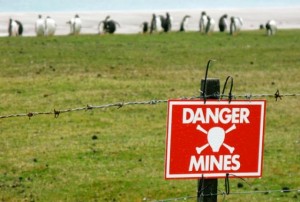 I am noticing more and more that weight loss surgery as a solution for obesity is all the rage. It used to be that only people severely obese (on the verge of death due to major health complications and no ability to exercise anymore) would have Bariatric surgery performed to save their life. Its original purpose was to help save lives of those who were struggling severely and had no other options.
I am noticing more and more that weight loss surgery as a solution for obesity is all the rage. It used to be that only people severely obese (on the verge of death due to major health complications and no ability to exercise anymore) would have Bariatric surgery performed to save their life. Its original purpose was to help save lives of those who were struggling severely and had no other options.
Today, there are young people and relatively healthy people having this operation and they sometimes weigh in at 250 or less pounds.
While these operations can be a really good option for folks who really need it, they should not be used as an easy way out of weight loss for healthy people who still have the ability to exercise and diet and lose weight using other tools.
What people do not realize is that there may be major psychological, social, and spiritual affects (depending on your own belief systems).
In the United States, we’ve developed a system of psychological evaluation to address the reasons why someone is having the surgery and test their mental competence, but it can be difficult to impossible to predict what will happen to a person following the operation. The body is not the same as it was before. Drastic physical and emotional changes occur within the body following Bariatric surgery.
Patients have to be extremely disciplined and militant in their self-care following these operations to just live a relatively normal life. The reason is there are going to be vitamin deficiencies and limitations in the body that were not previously there. That means they have to have regular vitamin injections and eat several times a day with extremely small portions among other things like further psychological evaluation and support after the operation. They may be told that they cannot exert themselves like they used to because they could deplete the small amount of water or vitamins they ingest in the small portions they are now forced to live with.
Most patients who decide to go through with the operation may say they are committed to all of this, but are they?
Let’s think realistically. We have busy lives and live in a society that is constantly busy and offers limited time for breaks at work or even at home. This makes it very challenging to stay on top of special diets and other practices that are suddenly part of life post op. And, if someone didn’t do a good job of disciplined dieting and exercise before the operation, it’s not likely they will follow a stringent plan after surgery either, and not doing so could cause major damage to the body and even become fatal.
People who choose to do these operations are choosing to give themselves a health condition with life-long consequences, and they need to be aware of that.
There are hormonal changes related to vitamin deficiencies that could even push people into old age.
There can be profound psychological impacts, some of which are still unknown.
What does the mother with 3 kids do when she has run out of energy and can’t keep up with her kids because she can’t consume enough nutrients?
Further, some people are traveling to other countries to have these operations performed for less money, but the healthcare is not as good and the pre and post op activities are not nearly as stringent as they are in the U.S. They cannot be held liable if they cut too much away or do something that causes a major internal infection in the stomach.
Let’s also take a step back and think about what happens physically, emotionally, and spiritually as well.
To put this into perspective, we have a second brain in our gut. Our gut brain is directly connected to our real brain via the Vagus nerve that runs through the body. When we are excited, scared, angry, nervous, in love, or making major decisions, we always feel it in our gut, right? When our bodies go into fight or flight mode to protect us, we release adrenaline that is felt in the gut. So, what happens when we cut away 80% of our guts, which is the system our body was designed with to process nutrition AND emotion?
Patients simply may not have the capacity to have the stamina or health level they were able to achieve prior to the bypass.
It’s no surprise that losing tons of weight in a rapid amount of time would have a psychological impact on patients. However, it isn’t known how deep that rabbit hole can go. We do not have all the stats we need yet, and there are variables involved as well, so information is not being publicized enough. Medical information around these procedures is in its infancy.
That said, it has been known for years that stomach surgery for obesity frequently has long-term neuropsychiatric effects including Wernicke’s and other encephalopathies (Neurology 1987;37 196-200), depression and substitute addiction.
In the relatively small number of cases I’ve observed, there were instances of stomach infections and other stomach and digestion-related health issues on top of deficiencies. This even resulted in death for some.
The body simply cannot operate the way it did before in many cases. This makes logical sense, as the amount of water that can be ingested by a human who hasn’t had this operation is drastically reduced after because of the size of the stomach. So, people have to choose to eat or drink and have expressed that they are either hungry or thirsty most of the time. This means nutrients is not handled the same way it used to be and that can cause the immune system to have to work harder as well.
Please understand that I am not judging. If you’ve had this operation or your loved one has, please don’t be angry with me. This operation has saved lives of people who would have died from high cholesterol, high blood pressure, and a number of other heart and health complications. I get that.
All I am saying is people need to consider choosing surgery ONLY when they absolutely need to have it and not as a means to lose weight faster or look more beautiful or handsome. Doing that is like burning the whole house down because it’s a mess. There are many options out there for weight loss, which include dealing with the emotional component of eating as well.
I have a short course about dealing with emotional eating, which you can find HERE.
There is still MUCH more work to be done in researching and documenting long-term effects of weight loss surgery. Below are some links to articles on the subject.
(Current Opinion in Psychiatry: September 2014 – Volume 27 – Issue 5 – p 374–379),
(https://www.psychologytoday.com/us/blog/the-truth-about-exercise-addiction/201611/the-mental-health-struggles-weight-loss-surgery)
self-harm (https://www.medscape.org/viewarticle/894158, https://www.health.harvard.edu/newsletter_article/Psychological_aspects_of_bariatric_surgery), new-onset mania (Psychiatry Investig. 2015 Jan; 12(1): 152–154.),
and vitamin B1 and B12 deficiencies
(https://jamanetwork.com/journals/jamaneurology/fullarticle/786290).
**This article should not be used to treat or diagnose any condition related to bariatric surgery. This is written from one perspective based on observation and personal opinion as well as some research. You should seek medical advice from your doctor if you are considering this type of operation.
 Blessing someone and ourselves costs nothing and gives a great return. You will feel better, more open and compassionate.Give this gift to yourself or someone else who needs it.
Blessing someone and ourselves costs nothing and gives a great return. You will feel better, more open and compassionate.Give this gift to yourself or someone else who needs it.








